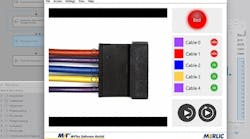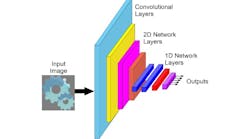Facebook is making its image recognition computer vision software tools, which work together to identify the contents of images, open source and available to the public.
A Facebook blog post notes that "over the past few years, progress in deep convolutional neural networks and the advent of ever more powerful computing architectures has led to machine vision systems rapidly increasing in their accuracy and capabilities." As a result, we’ve seen advances in image classification and object detection, but this is just the beginning of understanding the most relevant visual content of any image or video, and as a result, Facebook notes, it has been designing techniques that identify and segment each and every object in an image.
Developed by the Facebook AI Research team (FAIR), are called DeepMask, SharpMask, and MultiPathNet, and they work together to understand images and objects at the pixel level. DeepMask is a segmentation framework coupled with SharpMark 2, which is a segment refinement module, and these have enabled FAIR’s machine vision systems to detect and precisely delineate every object in an image. The final stage of its recognition pipeline uses a specialized convolutional net, MultiPathNet, to label each object mask with the object type it contains.
Code for all three of these, along with research papers and demos related to them, are now open and accessible to all, Facebook writes, with the hope that they’ll help rapidly advance the field of machine vision.
"As we continue improving these core technologies we'll continue publishing our latest results and updating the open source tools we make available to the community," they wrote.
In addition to enabling computers to recognize objects in photos, this technology will make it easier to search for specific images without an explicit tag on each photo. Furthermore, notes FAIR, the technology could help people with vision loss understand what is in a photo, as well as be applied to augmented reality in areas like commerce, health, and more.
"The more the community is using open source code, the faster it is improved and innovated on, which helps expand expertise and adds longevity to projects we feel are very important," Piotr Dollar, Facebook AI Research (FAIR) research scientist, told USA TODAY.
View the Facebook blog post.
Share your vision-related news by contacting James Carroll, Senior Web Editor, Vision Systems Design
To receive news like this in your inbox, click here.
Join our LinkedIn group | Like us on Facebook | Follow us on Twitter
Learn more: search the Vision Systems Design Buyer's Guide for companies, new products, press releases, and videos






